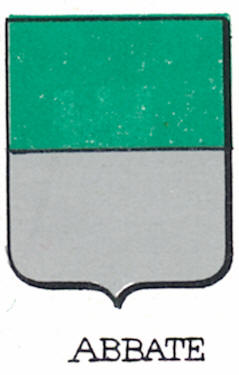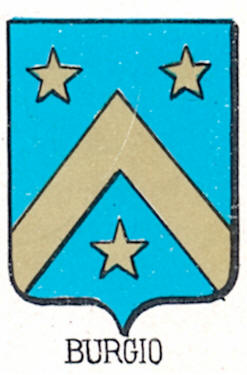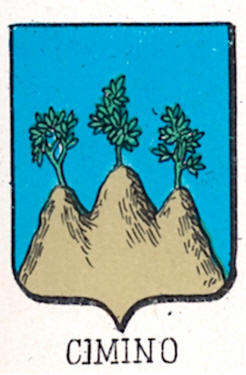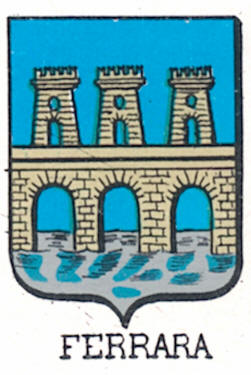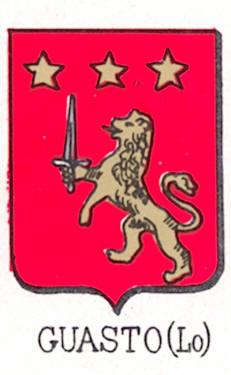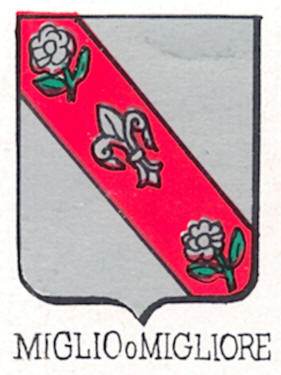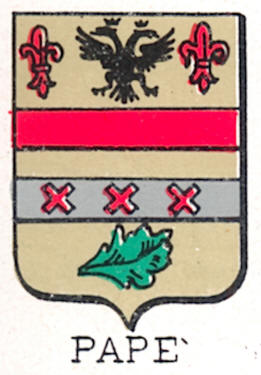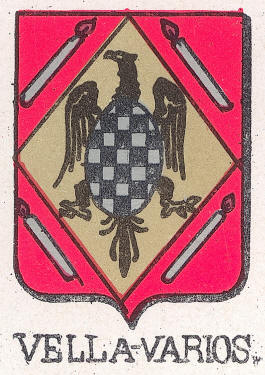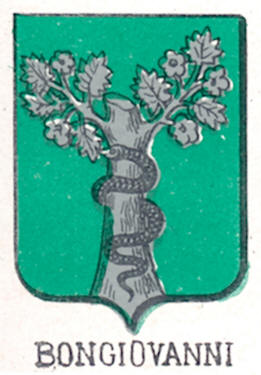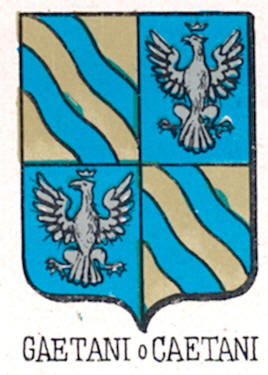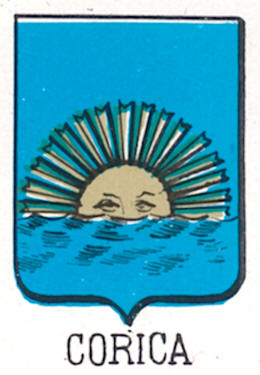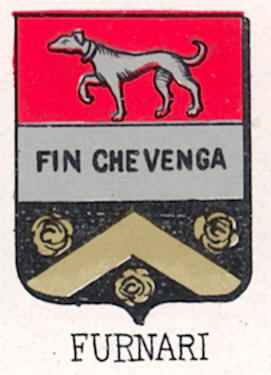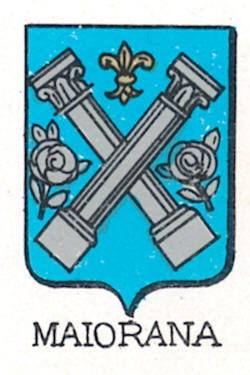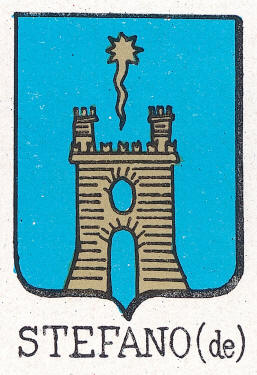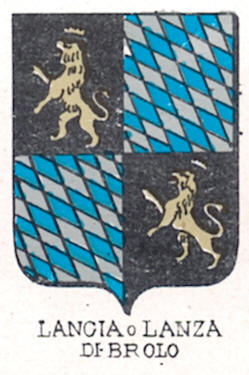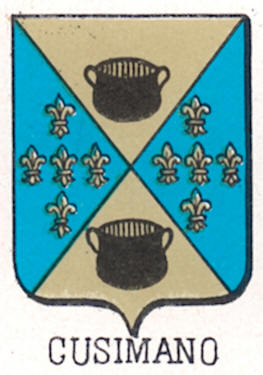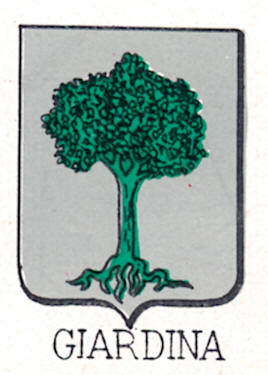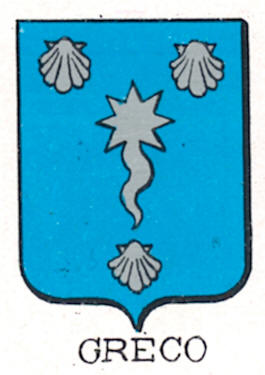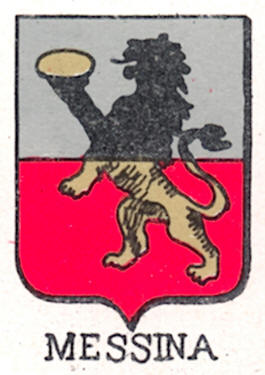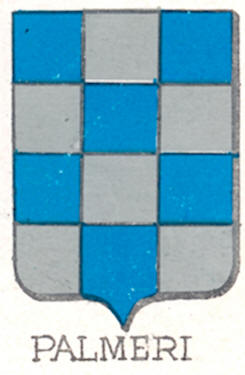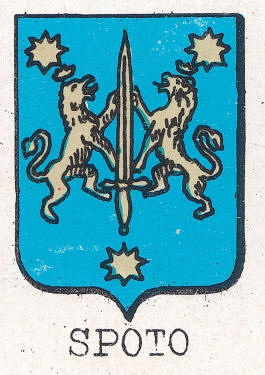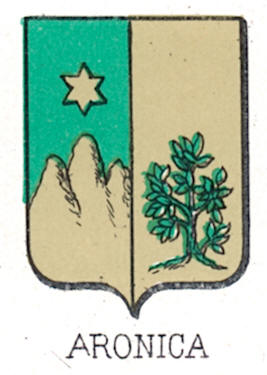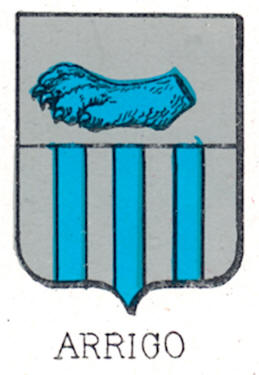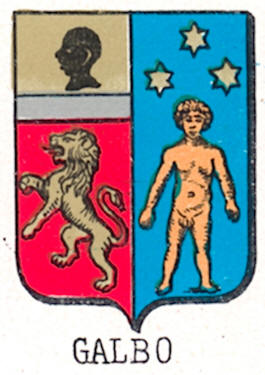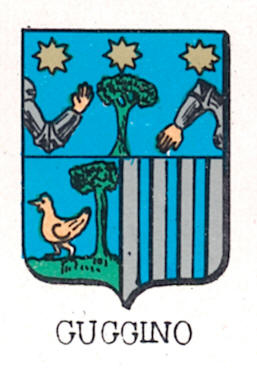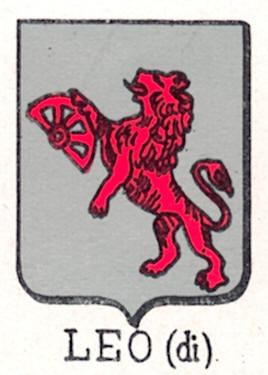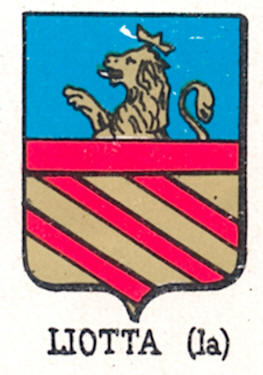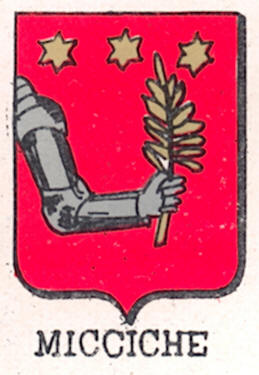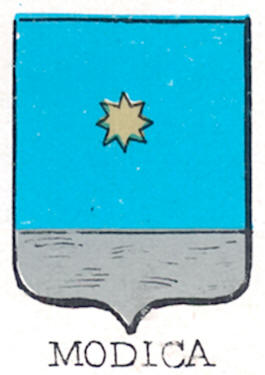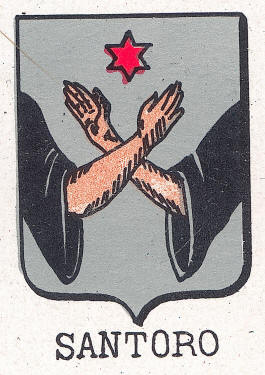|
Many families are interested in their family's
'crest' or 'Coat of Arms'.
The use of these designs
is greatly misunderstood. The arms originated
as a way of identifying individual nobles (and/or
members of the 'aristocracy'),
and originally only the first-born son of a noble
could display the same arms on his banners,
shields, weapons, etc. Other male offspring of
the noble who were not first-born, could use
portions of their father's arms, but they had to be
modified in some way. For a detailed
discussion of this point,
CLICK HERE. Eventually, consistent
elements of these crests within a family came to be
recognized as the noble family's 'Coat of Arms'.
Commoners HAD NO FAMILY CRESTS, and a noble's arms
could only be passed down by primogeniture, not
transferred, bought, or sold.
At their simplest, arms consist of a shield with a
plain field or combination of fields, on which
appear geometrical shapes or objects. The
items appearing on the shield are known as charges.
Today, there is a thriving
business for those claiming to 'find your family
crest', on-line or elsewhere. From my
experience, these entrepreneurs either make up a
crest that has images pertaining to the surname they
are representing, or they provide a crest that is
actually the arms of a noble family, but with no
connection shown to the modern client's family.
In my years of research for
my family and others from towns all over Sicily,
including records back to
the 1700's, I have yet to find a family that traces
back to nobility. Most, in fact, were of
common origins: sharecroppers, peasants, day
laborers, sulfur miners; or spinners, weavers and
seamstresses, and occasionally artisans like stonemasons and cabinet makers.
Such families did not have 'family crests.'
Their surnames often came from the
labor they performed, like
Pecoraro (shepherd) or a physical
characteristic, like Curto (short).
Many ordinary persons of
Sicilian descent, however, share surnames with those
of noble or once-noble ancestry. This is
explained when we recognize that in feudal times,
surnames were not widely used except by the noble,
rich or famous. However, a noble might have
dozens or hundreds of serfs and villagers under his
aegis. If one noble's chattel had to be
distinguished from another's, they were called by
the noble's surname. Thus Filippo the
contadino, working the fields of il Barone
Coniglio, came to be called Filippo Coniglio;
Leonardo, the shoemaker for il Conte Alessi
became Leonardo Alessi, and so on. When
these folks married and had offspring, their
children, even if they had moved to another place,
might retain the surnames their fathers had been
called by.
The arms below carry the
surnames of many Coniglio family members.
They're presented for illustration only.
They DO NOT
imply any connection between our family and
nobility. They can be considered to be the
heraldic arms (araldica in Sicilian) or
crests (stemme) of noble families with which
members of our family once may have been associated, probably
as subjects of the nobility who were entitled to the
arms. The names under
each stemma are those of the earliest
ancestors (that I know of) bearing the surname on
the crest. Clicking on those names will take
you to that person's page. Note that
there are
no known nobles in our ancestry!
The name of each stemma
may be slightly different than the modern surname:
Alessio for Alessi; Papè
for Papia, etc. |
